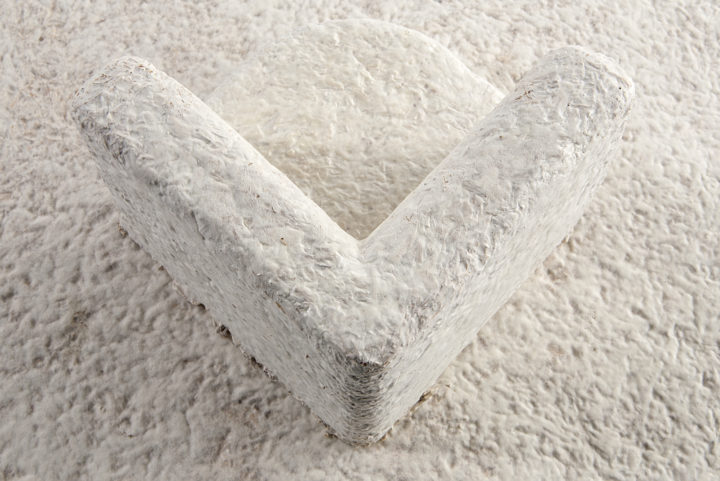MycoFoam: mushroom based packaging

This week’s Material Monday will be focusing on a possible replacement for the extremely harmful polystyrene with a biodegradable fungus-based packaging brought to you by our regular contributor Seetal Solanki from Ma-tt-er.
Mushrooms are one of the oldest organisms that have existed on our planet, approximately 700 million years before plants ever came to our existence. The potential and power these living beings have are exponential. Some designers and technologists are using nature’s finest organism to create bricks, furniture, textiles and fuel.
Mycelium are the roots of the fungus which is the vegetative part of the fungus. They branch out with a thread-like construction and are found on soil and in other substrates.
Myco Foam is a mushroom based packaging material by US biomaterials company Ecovative. This particular organic matter is constructed by the following method:
- Agricultural waste such as corn husks is cleaned.
- Mycelium is added, and the mixture is left for a few days.
- Mycelium grows fibres as it reaches out to digest the agricultural waste.
- Mixture is broken up into loose particles.
- Particles are put into shaped mould for a few days. Mycelium grows and forms a solid shape.
- Solid shape is removed and dried to stop growth and prevent production of mushrooms or spores
The main problem with polystyrene is that it is made using oil-based resources; a cubic foot of polystyrene would use approximately 1.5 litres of petroleum and this is a $20 million of this material is produced every year from building materials, disposable cups, table tops to surfboards. Not only does our planet produce a huge amount of polystyrene, it also occupies 25% of our landfills and this substance is not biologically compatible taking thousands of years to degrade.


According to Eben Bayer the co-founder of Ecovative, mushroom based packaging can be considered as ‘Nature’s recycling system’. This natural self-assembling material can achieve similar properties of the more conventional synthetic materials such as plastic. It takes into consideration waste, such as seed husks, woody biomass which can be turned into a polymer and is transformed into a glue but has the capacity to be used as compost once it has come to its end of life. The properties this material can achieve is so versatile as it can be moulded into any form as traditional plastics; insulating, fire resistant, moisture and vapour resistant as well as absorbing impacts, especially if they are used to protect goods as part of the packaging during shipment.
Growing your own materials rather than using oil-based methods can only be considered as a positive measure which has been providing good yield rates, taking all of five days to create, a lot faster than conventional farming.
Mycelium grows all around the world and the feedstock is adapted depending on where the production is taking place. For example if the Myco Foam was being produced in China the feedstock could be rice husks rather than corn husks which would be best in the US.
Retail giant IKEA are looking to replace their flat-pack furniture packaging to a fungus-based source which could in turn have a huge impact in changing the game and hopefully set an example of what could possibly be the norm.
“Mushroom mycelium represents regrowth, rejuvenation, regeneration. Fungi generates soil that gives life. The task we have today is to understand the language of nature. I believe nature is intelligent.” – Paul Stamets.
Could the future be fungi?
Posted 01 November, 2016 by Katie Kubrak